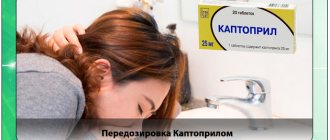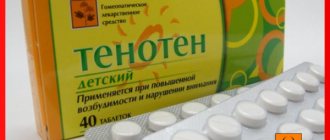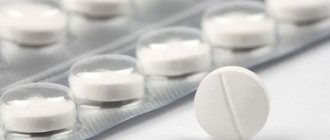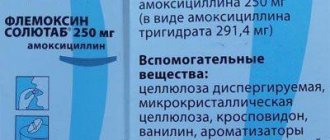Valocordin is a very well-known and widely used drug used to relieve stress and as a symptomatic remedy for diseases of the cardiovascular system. The action of Valocordin is complex, helping a person to calm down and fall asleep, but if used incorrectly, it has a detrimental effect on the body, requiring emergency medical attention. Why the drug is dangerous in this case is the topic of today’s article.
Composition of the medicine
Available in liquid form for administration as drops. Bubbles have a volume of 20 and 50 ml. The composition contains several active ingredients that help to comprehensively combat the problem.
- Phenobarbital (18.4 mg per 1 ml).
This substance has a mild sedative effect, present in Valocordin in a small dose. Relieves smooth muscle spasms and has a muscle relaxant effect. It is addictive, so in many countries it is available only with a prescription.
- Ethyl ether (18.4 mg per 1 ml).
Produces a slightly analgesic effect, thins the blood, and relaxes the muscles. It depresses the central nervous system, without accompanying the person’s fears and panic, due to interaction with phenobarbital.
The substance is 96% ethyl alcohol. Present in the medicine as a preservative. It also promotes vasodilation and easier blood flow.
- Peppermint oil (1.3 mg per 1 ml).
It has a vasodilating effect, relieving pain in the temporal part of the head. Relieves fears, worries, and gently helps with nervous exhaustion. Has a beneficial effect on the circulatory system.
- Hop oil (0.18 mg per 1 ml).
Another auxiliary component for sedation. A person who regularly takes medications with an extract of this oil sleeps better and is less exposed to stressful situations.
Information about the drug
Valocordin is a combination drug that has a sedative and hypnotic effect and relieves spasms.
Compound
The medicine is produced in drops for oral administration, the therapeutic effect of which is explained by phenobarbital and ethyl bromoisovalerate.
In addition to them, the drug contains the following inactive components:
- mint and hop oil,
- water,
- E 1510.
Phenobarbital expands the lumen of blood vessels, improves sleep, and has a calming effect.
Ethyl bromizovalerianate also has a sedative and hypnotic effect and relieves spasms.
Indications for use
Valocordin has a lot of indications, having a beneficial effect on three interrelated problems at once.
- Dysfunction of the cardiovascular system (tachycardia, hypertension, arrhythmia).
- Autonomic disorders (manifested against the background of stressful situations).
- Sleep disturbance (difficulty falling asleep, insomnia).
The drug is a symptomatic remedy and is not prescribed for severe diseases of the heart and blood vessels; it will also not help with serious mental disorders. You can take Valocordin for a one-time solution to the problem, but you should not abuse it without consulting a doctor.
Contraindications
Valocordin has a small number of contraindications, which makes it available for use as a prophylactic and an alternative to more serious sedative medications.
- Pregnant and nursing mothers (pregnancy is an absolute contraindication, since the components penetrate the placenta; the risks of taking during lactation are weighed by the attending physician).
- Persons under 18 years of age.
- Patients with renal or hepatic dysfunction, chronic diseases of these organs.
- People suffering from alcoholism, as well as those with skull injuries and concussions should use with caution.
The drug may cause mild side effects such as dizziness, weakness, and drowsiness. Sometimes allergic reactions to components occur.
Problems associated with taking Valocordin
Many experts do not recommend taking the drug, as they believe that Valocordin only masks unpleasant symptoms, but does not promote recovery.
In addition, the drug is addictive and has a high risk of overdose. For this reason, you should be especially careful when taking the drug:
- correctly calculate the required number of drops;
- It is reasonable to adjust the course duration.
The use of any medications should be done only after a doctor’s prescription.
Harm of Valocordin to the human body
Before taking Valocordin, you should weigh the pros and cons that regular use of the drug entails.
The composition is rich in several active components that are highly addictive, provoking a person to increase the dosage (ethanol, phenobarbital). To achieve the effect, you have to drink more and more medicine, while the active substances begin to depress the central nervous system, provoke tachycardia and aggravate alcohol dependence.
The maximum toxic dose is 1-2 g. drug per 5 kg of human weight. Using more than this amount of medication will most likely cause death. A single lethal dose for a person weighing 80 kg is about 40-50 ml.
Regular use provokes dependence and increased dosage, which are also accompanied by mild symptoms of intoxication.
Acute toxemia
A one-time dose of Valocordin, in quantities significantly exceeding therapeutic norms, is fraught with serious intoxication. And if contraindications are ignored, an overdose of valocordin is possible even if therapeutic standards are observed.
Possibility of intoxication
If you drink 10 ml of liquid at a time, which is 1/2 of a bottle, you can provoke valocordin poisoning, which has serious health consequences.
The maximum conditionally permissible norm corresponds to 1-2 grams of valocordin for every 5 kilograms of the patient’s weight. A single dose exceeding this dose can be fatal.
The one-time lethal norm for an adult weighing 80 kg corresponds to 40-50 ml of liquid.
A single dose of 40-50 ml of valocordin can be fatal
Prolonged and uncontrolled treatment leads to the accumulation of ethyl brominated valyant in the body. This active substance provokes the development of chronic overdose.
Signs
The degree of intoxication depends on the amount of medication taken. It occurs in mild, moderate and severe forms.
Light and medium shape
If the victim has a strong immune system and does not have kidney disease, he will suffer mild or moderate toxemia. This form is characterized by the following symptoms:
- excessive fatigue;
- dizziness;
- drowsiness (the sleep is so deep that sometimes waking a person becomes problematic);
- tachycardia;
- imbalance in movement.
Severe form
If you drink enough valocordin, acute toxemia may develop. The above symptoms are supplemented by the following:
- shallow rapid breathing;
- a sharp drop in blood pressure;
- arrhythmia;
- muscle convulsions;
- convulsive syndromes.
In the absence of timely assistance, the consequences are very serious: collapse develops, and, against the backdrop of progressive hypoxia of internal organs and tissues, a coma occurs. Lack of oxygen in the tissues of the brain leads to brain damage and paralyzes the respiratory and vasomotor centers. As a result of progression of CVD and respiratory failure, death occurs.
Chronic form
If you take Valocordin for a long time, the overdose becomes chronic. It is characterized by the following symptoms:
Apathy, depression in chronic overdose of valocordin
- conjunctivitis;
- rhinitis;
- acne;
- apathy;
- depression;
- confusion.
Symptoms and consequences of overdose
Valocordin has 3 stages of overdose depending on the amount of medicine taken. Each is characterized by varying degrees of severity of disorders of the central nervous system, digestive, and circulatory systems.
If such symptoms are detected, you should provide first aid to the victim and call a doctor.
The person experiences general weakness of the body and drowsiness. After waking up, the symptoms do not go away: there is slight incoherence of speech, forgetfulness, apathy. A patient with such poisoning lacks concentration, general muscle tone decreases, and lethargy appears in the limbs.
- Average degree of intoxication.
The victim falls into a prolonged drug-induced sleep, similar to general anesthesia. This happens due to phenobarbital, which is used in medicine precisely for these purposes. It is almost impossible to wake a person, and if this happens, after a few minutes he falls asleep again.
You can also note increased salivation, an almost complete lack of muscle tone, and a significant decrease in blood pressure.
The patient falls into a coma, which is characterized by a complete lack of consciousness. Such victims have disturbances in the respiratory system and lack reflexes. Heart failure develops, which can cause swelling of the lung tissue and death. Audible wheezing and blue discoloration of the skin are also observed.
Symptoms of mild intoxication caused by regular use of Valocordin:
- allergic rhinitis;
- skin rashes;
- conjunctivitis;
- prolonged depression;
- apathy;
- lethargy, loss of interest in life.
The drug is not recommended for long-term use and is not suitable for the treatment of diseases. It can only temporarily relieve symptoms before contacting a doctor.
What effect do alcoholic drinks have on the body?
Myths about the properties of alcohol originated many centuries ago. They are trying to convey information to the younger generation about the harmful effects of alcoholic beverages on the human body. However, sooner or later there comes a time when you have to experience all the “delights” of alcoholic drinks. This is life and, of course, nothing will happen from one glass of wine (in the absence of individual intolerance), but regular consumption of strong drinks certainly harms the body.
Interaction of alcohol with the human body
After entering the human body, alcohol travels a long way, affecting all organ systems. Absorption into the bloodstream occurs in the duodenum, so there is an opinion that you should eat before drinking alcohol. At all stages of the digestion process, ethanol (alcohol) breaks down into carbon dioxide, water and intermediate metabolic products, which are highly toxic.
The main function of detoxification is performed by the liver, passing through its vessels all the blood coming from the digestive tract. But due to the excessive amount of toxic substances ingested, it cannot completely cleanse the blood, therefore, alcohol continues its path through the body. The chemical properties of ethyl alcohol, which is the main component of any alcoholic drink, allow it to dissolve in water. Thanks to this, ethanol easily penetrates into organs with a developed vascular network.
The brain has a particularly intense blood supply, the effect on which is expressed by external manifestations of intoxication. But, being in this light and relaxed state, a person has no idea what is really going on in his head. At this time, the cerebral cortex undergoes changes, as its cells (neurocytes) simply die. Therefore, during intoxication, a change in the emotional state is observed, and with regular use, states of depression and mental disorders occur.
In addition, alcohol affects blood components and cells. On the one hand, there is an opinion that drinking alcohol in small quantities thins the blood, thereby reducing the risk of heart attack and stroke. On the other hand, they claim that ethyl alcohol, on the contrary, thickens the blood. But what information is reliable? In order to answer this question, it is necessary to understand the chemical structure of blood and its interaction with alcohol.
Thinning and thickening of blood
During the first phase - resorption (absorption) - the blood thins out. This happens due to the effect of alcohol on the content of fibrinogen, which is responsible for blood clotting. With moderate alcohol consumption, there is an increase in the amount of high-density lipoproteins - carriers of cholesterol from cells to the liver. Lipoproteins lower cholesterol levels, thereby thinning the blood and reducing the risk of heart attack and stroke. Ethanol is an osmotically active substance and attracts water, therefore, circulating in the blood, it leads to its dilution. Facial swelling and thirst arise for the same reason.
The next phase is elimination. It is during this period that blood thickening occurs. The effect of alcohol is directed on erythrocytes - red blood cells, whose function is gas exchange. Their cell wall includes a lipid (fat) layer, which is required to create a unipolar negative charge. This feature is important to prevent cell aggregation.
Ethanol, interacting with red blood cells, has a detrimental effect on the fatty layer of the wall and changes the electrical charge. As a result, they begin to stick together, forming “clumps” that find it difficult to move through small vessels (capillaries). Thus, alcohol thickens the blood. This leads to blockage of the lumen of small-diameter vessels, the largest number of which are located in the brain, lungs, and kidneys. With prolonged consumption of alcoholic beverages, the number of vessels unable to ensure blood movement increases, which can lead to ischemia (oxygen starvation).
Our readers successfully use ReCardio to treat hypertension. Seeing how popular this product is, we decided to bring it to your attention. Read more here...
Consequences and methods of detoxification
The effect of alcohol on a person’s condition depends on many factors. One of the most significant of them is the amount of drink taken. The lethal dose is considered to be 4 ppm, but this figure can vary. The main criteria influencing the body's reactions while intoxicated are:
- Gender of a person.
- Body mass.
- Hereditary predisposition.
- The quality of the alcoholic drink.
- Psychological condition.
- Presence of diseases.
It has been proven that abuse has a detrimental effect on the state of the psyche, immune and cardiovascular systems. There is a decrease in the level of intelligence and a decrease in practical skills, which is a consequence of the effects of alcohol on the bloodstream and the brain.
The body's reaction to the amount of drink is always different. It is impossible to predict how you will feel, even if a person knows the norm. There are times when medical assistance is required. Most often this occurs due to alcohol poisoning, the presence of heart disease, or consumption of a lethal dose. In medical institutions, intravenous solutions are used to bring a person out of a critical condition, which is necessary to remove toxic substances from the blood.
Contraindications
Due to the alcohol content, the drug may be prohibited in the presence of chronic stages of diseases of the liver, kidneys, and brain. Alcoholism is classified as a strict contraindication.
Valocordin (Corvalol) is prohibited for use by children (under 18 years of age) and pregnant (nursing) women, people with allergic reactions. The interaction of alcohol and phenobarbital threatens serious poisoning.
Valoserdin is a drug in the form of drops. The components of the product are phenobarbital (2 g) and ethyl bromizovalerianate (2 g) in 100 ml. The liquid is colorless and has a light aroma of peppermint, hops and oregano.
Causes of poisoning
Valocordin poisoning is possible in the following cases:
- The child found the medicine and drank it.
- Due to the alcohol or phenobarbital content, the drug is used in large quantities by people suffering from alcohol or drug addiction.
- A person self-medicates and takes medicine for a long time without the supervision of a doctor, or in order to ease his well-being, he takes a large dose of medicine at a time.
- Expired Valocordin was drunk. To ensure that the medicine does not lose its therapeutic effect, it must be stored in a place protected from the UV rays of the sun at a temperature of 15 to 25 degrees, for 36 months from the date of production.
- Valocordin is used simultaneously with other medications. Its effect is enhanced by sedatives, sleeping pills, neuroleptics, tranquilizers, alcoholic drinks, narcotic analgesics, muscle relaxants. The effect of Valocordin is weakened by drugs that stimulate the central nervous system, atropine, glucose, vitamin B 1, nicotinic acid, belladonna extract. Also, it should be taken into account that phenobarbital, which is part of Valocordin, weakens the effect of indirect anticoagulants, sulfonamides, antibiotics, glucocorticosteroids, griseofulvin, oral contraceptive pills, and salicylates. Simultaneous administration with phenytoin and valproate increases the level of phenobarbital in the body. When taking acetazolamide, the urine pH shifts to the alkaline side, as a result, the absorption of phenobarbital in the kidneys decreases and its effect is weakened.
Pharmacology
Sedative and antispasmodic effect: decreased reflexes and reactions of the central nervous system, eliminates pain.
- Impaired functions of the cardiovascular system;
- Neuroses, irritability;
- Insomnia;
- Tachycardia;
- Problems of the autonomic nervous system;
- Cramps in the intestines.
- Individual intolerance;
- Kidney or liver dysfunction;
- The period of gestation and feeding;
- Porphyria;
- Alcoholism;
- Brain injuries;
- Childhood.
Side effects: central nervous system ailments (apathy and depression, impaired coordination).
Therapeutic doses: 15-20 drops per glass of water, taken three times a day. In case of tachycardia, 40-50 drops. The duration of treatment is prescribed by the doctor.
Overdose: drowsiness, dizziness, psychomotor disturbances (coma, low blood pressure, changes in breathing, collapse of blood vessels).
Scope of application and dosage regimen
It is recommended to drink Valocordin if you experience:
- dysfunction of the cardiovascular system, such as pain in the heart, increased heart rate,
- psychoneuroses, against which irritability, anxiety, fear arise,
- sleep disturbance,
- mental arousal, which is characterized by strong vegetative reactions.
It is recommended to take the medication before meals with a small amount of water.
How long it takes for Valocordin to act depends on the individual characteristics of the body. The maximum concentration of phenobarbital in blood plasma is achieved after 1-2 hours.
The treatment regimen is selected individually. In most cases, it is recommended to take the drug from 15 to 20 drops per dose three times a day. For people who have difficulty falling asleep, the single dosage can be increased to 30 drops. This is the maximum dose of Valocordin per dose.
The doctor should decide on an individual basis how many days to take the medicine.
Taking medication and consequences
You should not combine Valocordin with drugs that have sedative properties (an increase in the effect on the body is noted) and others that, in such a combination, can weaken the mobility of the central nervous system. The hormonal effect of a number of drugs, especially contraceptives, decreases.
Taking medication and alcohol at the same time will cause severe intoxication and may result in death.
The use of therapeutic doses can stimulate inhibition of most reflexes of the central nervous system. At this time, it is not recommended to drive a vehicle or carry out work using mechanical and electrical devices.
The medicine should be taken 30 minutes before. before meals, 2-3 times a day in the proportion of 20 drops / 1 glass of water.
The limit of lethal outcome is a dose of 100 mg/kg body weight.
Today, an analogue of Valocordin is Valoserdin. Due to their external similarity, they are easy to confuse. Drinking constantly is not recommended. How much to drip in case of insomnia? Of course, the question is important, 30 drops will be enough. In stressful situations (critical) up to 60. The drug is available in Russian pharmacies, prices are moderate. Manufacturer: Germany (Germany).
Advice: use in moderation, do not abuse to avoid the consequences of poisoning.
- A person, feeling severe pain in the heart area, takes an exceeding therapeutic dose of the drug.
- Children find medicinal drops and taste them.
- Long-term use without supervision in a medical facility.
- Simultaneous use with alcoholic beverages.
- Using a product that has expired.
Poisoning problem
Symptoms of Valocordin poisoning are divided into two forms: acute and chronic overdose. In the first option, an increased dose of the drug is taken at one time, and in the second it occurs as a result of prolonged use.
General characteristics of Valocordin
The drug is produced by the German company Crevel Meuselbach GmbH. It is also found in pharmacies under the name Doxylamine. In many European countries, free sale is prohibited, which is due to the composition - there is a light drug called phenobarbital, which provokes addiction. This active substance in combination with alcohol can be fatal.
The preparation also contains other ingredients:
- ethyl bromizovalerant;
- hop oil;
- alcohol 96%;
- purified water.
Release form: drops in a glass bottle with a dispenser.
Main properties of Valocordin:
- vasodilator;
- hypnotic;
- antispasmodic.
Despite the availability of the medicine in Russia, it is advisable to consult a doctor before use in order to avoid overdose and negative effects as a result of the presence of prohibitions on use.
Dealing with the consequences
The first pronounced symptom of poisoning is an indication for gastric lavage within an hour. You need to drink a glass of water and provoke a gag reflex by applying pressure to your tongue. Do at least three times. You can carry out a cleansing procedure using an enema and saline solutions.
The sorbent will stop the absorption of the drug into the blood through the intestinal walls. Smecta, activated carbon or Filtrum are used.
Drink a lot of water at room temperature (fruit drinks, lemon tea) to quickly rid the body of the effects of poisoning.
The doctor will prescribe a course of treatment, especially for chronic overdose.
The prescription of therapy in a medical institution for poisoning is gastric lavage with potassium permanganate, saline solutions in a dropper to cleanse the blood. The victim undergoes hemodialysis in case of severe intoxication with the drug.
The use of Valocordin (Corvalol) in many Western European countries is prohibited or allowed strictly as prescribed by a doctor. This is due to the fact that the drug contains phenobarbital, which can cause the development of drug dependence, and ethyl alcohol, which potentiates the effect of phenobarbital.
In Russia, Valocordin can be purchased at any pharmacy; no prescription is required, which creates a false impression that it is completely harmless.
Treatment
If you notice similar symptoms of intoxication in a person, you should call an ambulance. You can independently offer the victim a stomach sorbent available at home. This will help reduce the concentration of active substances. It is also recommended to drink a lot of warm liquid (tea with lemon, fruit juice). If a medical worker is present among the witnesses, he can rinse the stomach with a solution of potassium permanganate.
In a hospital setting, the patient is prescribed supportive and cleansing therapy. Drip saline solutions are used to cleanse the blood. In severe cases, hemodialysis is performed.
Analyzing the consequences of long-term use of the drug, we can conclude that the apparent harmlessness provokes people to use the drug more and more often and in large quantities, which harms the body without bringing any benefit. Therefore, if serious side effects occur, it is better to consult a doctor for advice rather than increase the dosage.
What dose of Valocordin is needed for an overdose?
Valocordin has a mild hypotensive, antispasmodic and sedative (calming) effect. According to the instructions, the dose for adults is 3 times a day, 15-20 drops in a small amount of water on a piece of sugar. With severe tachycardia, the single dose can be increased to 40 drops.
Valocordin is also used in pediatric practice, but the doses, frequency and duration of administration are determined only by the attending physician, based on the age, weight of the child and his state of health.
A single dose of 10 ml of Valocordin (½ bottle) by an adult causes an overdose that can lead to serious health consequences, including life-threatening ones. For children, the toxic dose is individual, but much less.
The effect of Valocordin is enhanced by tranquilizers and sedatives, as well as ethyl alcohol, so when they are used together, an overdose can occur even when taking therapeutic doses.
Long-term and uncontrolled treatment with Valocordin leads to the accumulation in the body of one of the components of the drug, namely ethyl bromizovalerianate, which causes the development of chronic overdose. In addition, with long-term use of Valocordin, drug dependence is formed due to the presence of phenobarbital in its composition.
Dosage
The instructions clearly state how to use Valocordin:
- It is recommended to take it no more than 3 times a day before meals.
- Dissolve 15–20 drops in water or apply to a piece of sugar.
- For insomnia, you are allowed to drink 30 drops.
- With a pronounced increase in heart rate up to 40.
- A single volume does not exceed 10 ml.
Contrary to the instructions, the medicine is sometimes recommended for treating a child. But the dose in this case is determined individually, depending on the condition of the baby, age, weight, and the presence of chronic diseases.
Therapy with Valocordin reduces concentration. Therefore, during the course it is better not to drive vehicles or work with electrical devices.
Signs of overdose
Acute overdose
A single dose of Valocordin, significantly exceeding the therapeutic dose, causes an acute overdose. Depending on the dose taken and the condition of the body, it can be mild, moderate and severe.
Mild to moderate overdose is characterized by:
- excessive fatigue, weakness;
- dizziness;
- drowsiness, and the sleep is so deep that waking up the victim is very difficult, and sometimes impossible;
- increased heart rate (tachycardia);
- impaired coordination of movements.
In case of severe overdose, the following symptoms are added:
- rapid shallow breathing;
- arrhythmia;
- a sharp decrease in blood pressure;
- muscle twitching;
- convulsive seizures.
In the absence of medical care, acute vascular insufficiency (collapse) develops, then, against the background of increasing hypoxia of organs and tissues, coma. Oxygen starvation leads to brain damage and paralysis of the respiratory and vasomotor centers. As a result of increasing cardiovascular and respiratory failure, death occurs.
Chronic overdose
Chronic overdose of Valocordin, or more precisely, ethylbromoisovalerate, which is part of it, manifests itself:
- conjunctivitis;
- rhinitis;
- acne;
- apathy;
- depression;
- confusion.
Possible complications
A severe overdose of Valocordin, even with full medical care, can be fatal. Less severe consequences include: pneumonia, impaired renal function and neurological disorders in the long term (depression, decreased reaction speed, memory impairment, unsteady gait, etc.).
Impaired coordination of movements caused by abuse of Valocordin often causes injury to older people during a fall.
Video from YouTube on the topic of the article:
First aid for an overdose of Valocordin
First aid measures for acute overdose:
- Gastric lavage using the tubeless method. The victim should drink about 1 liter of water, then, irritating the root of the tongue, induce vomiting. The procedure is performed at least 3 times. It is necessary to rinse the stomach if no more than 1 hour has passed since taking the drug.
- Reception of sorbent. To prevent the absorption of Valocordin, which has managed to penetrate the small intestine, you should take any drug with absorbent properties (Smecta, Activated Carbon, Filtrum STI).
- Drink plenty of warm drinks. This will speed up the removal of toxic substances from the body.
In case of chronic overdose and/or development of drug dependence, first aid is not required; you must stop taking the drug and consult a doctor.
When is medical help needed?
Seeking medical help is necessary in all cases, even with a mild overdose, since a sudden and sharp deterioration in the victim’s condition is possible at any time.
Treatment of acute overdose occurs in the toxicology department, in severe cases - in the intensive care unit:
- gastric lavage using a gastric tube;
- prevention of development or restoration of existing respiratory and cardiovascular disorders;
- forced diuresis with blood alkalization with sodium bicarbonate solution, extracorporeal hemodialysis, hemosorption;
- in case of severe respiratory failure, tracheal intubation and transfer of the patient to artificial ventilation.
To treat chronic overdose, diuretics (Lasix, Veroshpiron, Hypothiazide) are used in combination with plenty of salted drinks.
Treatment of drug addiction to Valocordin requires the joint efforts of a toxicologist, narcologist and psychotherapist.
What to do in case of drug poisoning
If one of your loved ones has been poisoned with Corvalol, what should you do at home? Regardless of the severity of intoxication, call an ambulance immediately: the clinical picture can worsen sharply at any time.
Before the arrival of doctors, it is possible to alleviate the condition of the victim only in case of a mild form of poisoning. First aid measures will be as follows:
- Gastric lavage. This is done until the vomit becomes completely clear. The victim is given a large amount of water and vomiting is artificially induced. Then the procedure is repeated.
- Purgation. This is done with an enema or saline laxative.
- Reception of sorbent. It is necessary to give the patient a drug that will bind the half-life products of the drug and remove them from the body. Polyphepan, lactofiltrum, smecta or other sorbents are appropriate.
- Drink plenty of fluids. To speed up the elimination of toxins, give the patient warm tea, compote or water.
If the patient is unconscious, these actions will be inappropriate and even dangerous, as they may cause suffocation. All that remains is to call an ambulance and monitor the patient’s condition. You need to lay him on his side, unbutton his clothes and ensure a flow of fresh air. You should check your pulse and breathing, and if they are absent, perform chest compressions and artificial respiration.
Try to determine the amount of the drug that the poisoned person drank. If you find records of daily dosage and hours of use, give them to your doctors.
Further therapy is carried out in a hospital. Doctors determine how serious the Corvalol poisoning was and prescribe treatment. Bemegride can be used as a specific antidote: the analeptic is administered intravenously, relieves inhibition of blood circulation and respiratory activity.
Therapy is carried out aimed at maintaining and restoring body functions:
- artificial ventilation;
- gastric lavage using a tube;
- normalization of water-salt balance using special solutions;
- hemodialysis and hemosorption - if phenobarbital has accumulated in critical quantities.
The patient is also prescribed symptomatic treatment: drugs with a diuretic effect, drugs to stabilize the heart rhythm and increase blood pressure to normal levels. The duration of therapy depends on the severity of the poisoning, as well as the damage caused to internal organs and systems.
If a patient is found to be dependent on Corvalol, he will be prescribed consultations with a toxicologist, psychotherapist and narcologist.
Toxic dose of Corvalol
A drug overdose occurs when more than 40 drops are taken at a time. The daily amount of the drug should be no more than 150 drops, otherwise serious consequences are possible. A dose of 0.1-0.3 g per 1 kg of patient weight is considered lethal, but if the kidneys and liver are impaired, or the patient is elderly, death is possible even with smaller volumes.
Corvalol poisoning can occur as a result of an accidental or intentional overdose: it is often prescribed to elderly patients who find it difficult to monitor regular intake due to forgetfulness and vision problems. It is even more difficult to calculate the dosage of medication if the condition suddenly worsens. If the recommended norm is constantly exceeded, the patient develops chronic intoxication and dependence on the drug.










